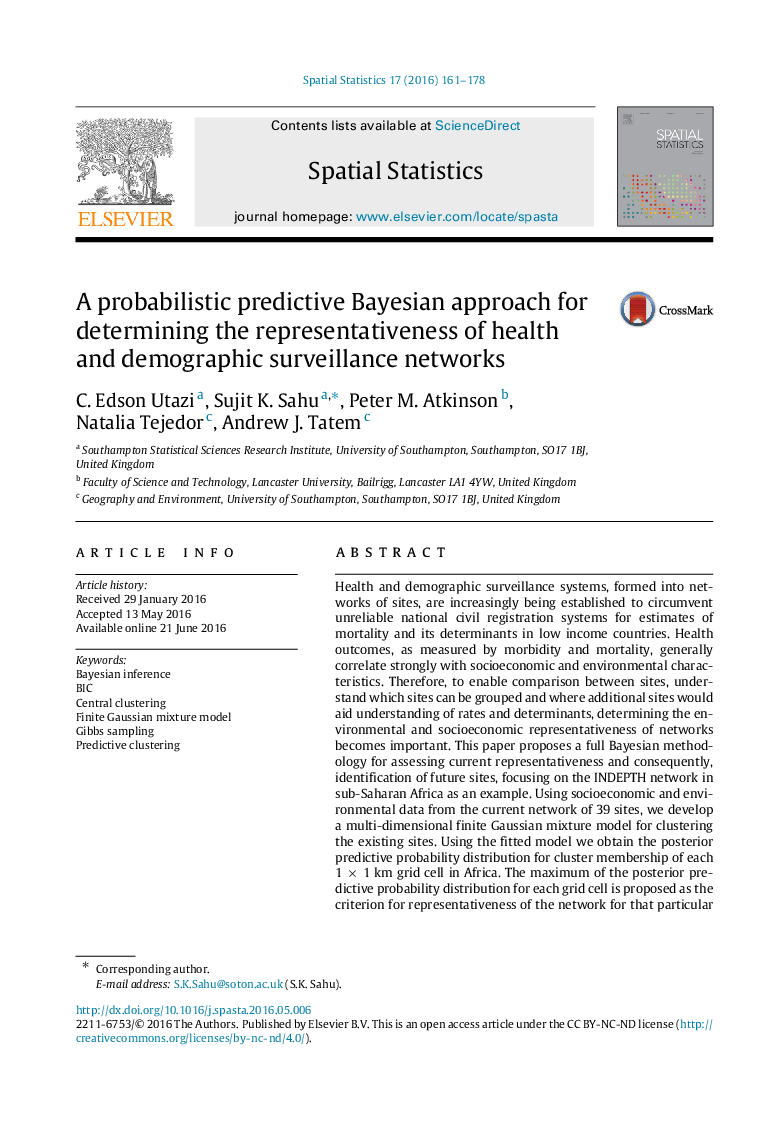| Article ID | Journal | Published Year | Pages | File Type |
|---|---|---|---|---|
| 7496570 | Spatial Statistics | 2016 | 18 Pages |
Abstract
Health and demographic surveillance systems, formed into networks of sites, are increasingly being established to circumvent unreliable national civil registration systems for estimates of mortality and its determinants in low income countries. Health outcomes, as measured by morbidity and mortality, generally correlate strongly with socioeconomic and environmental characteristics. Therefore, to enable comparison between sites, understand which sites can be grouped and where additional sites would aid understanding of rates and determinants, determining the environmental and socioeconomic representativeness of networks becomes important. This paper proposes a full Bayesian methodology for assessing current representativeness and consequently, identification of future sites, focusing on the INDEPTH network in sub-Saharan Africa as an example. Using socioeconomic and environmental data from the current network of 39 sites, we develop a multi-dimensional finite Gaussian mixture model for clustering the existing sites. Using the fitted model we obtain the posterior predictive probability distribution for cluster membership of each 1Ã1Â km grid cell in Africa. The maximum of the posterior predictive probability distribution for each grid cell is proposed as the criterion for representativeness of the network for that particular grid cell. We demonstrate the conceptual superiority and practical appeal of the proposed Bayesian probabilistic method over previously applied deterministic clustering methods. As an example of the potential utility and application of the method, we also suggest optimal site selection methods for possible additions to the network.
Keywords
Related Topics
Physical Sciences and Engineering
Earth and Planetary Sciences
Earth and Planetary Sciences (General)
Authors
C. Edson Utazi, Sujit K. Sahu, Peter M. Atkinson, Natalia Tejedor, Andrew J. Tatem,
